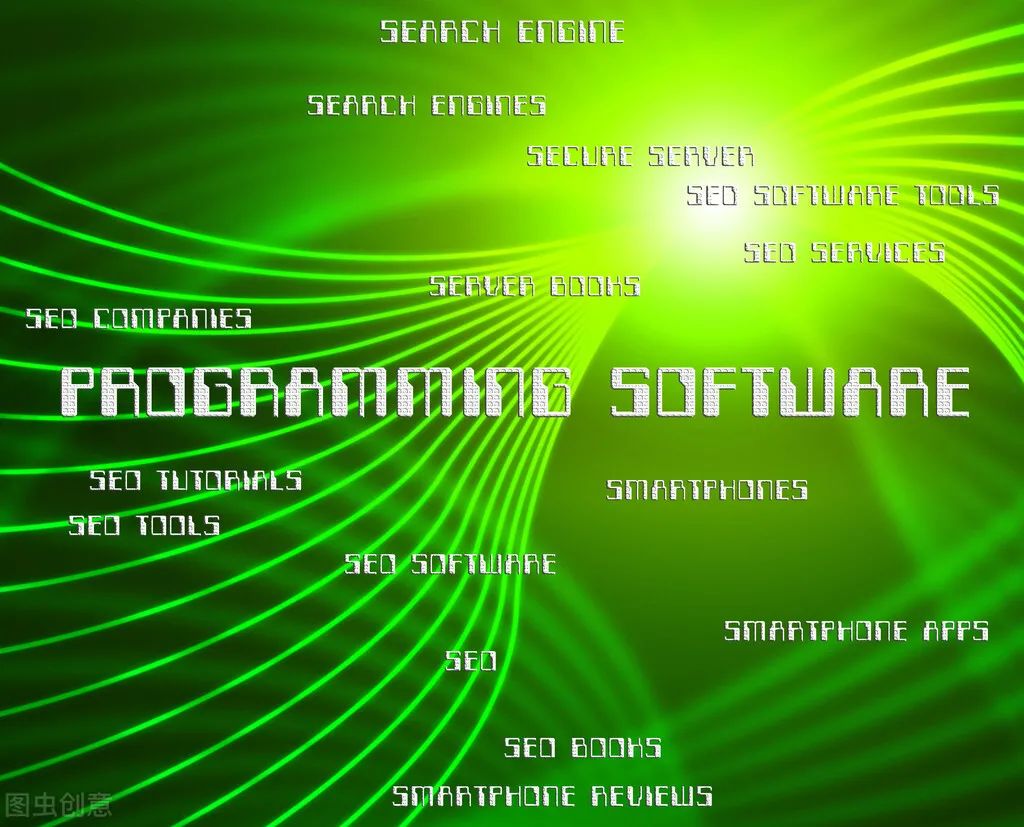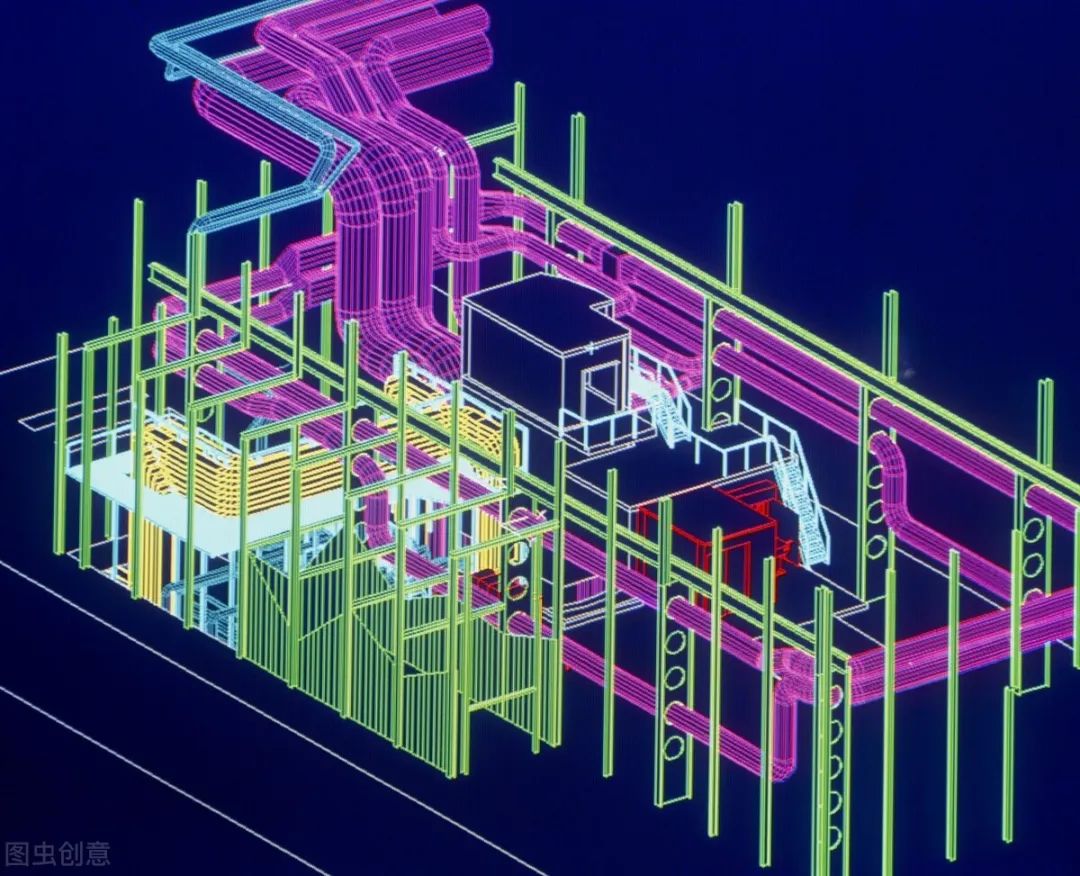Industrial software refers to software specifically designed for the industrial sector, including systems, applications, middleware, and embedded software. Industrial software is generally divided into two types: embedded software and non-embedded software. Embedded software is integrated into controllers, communication devices, and sensors for data collection, control, and communication, while non-embedded software is installed on general-purpose computers or industrial control computers for design, programming, processes, monitoring, and management. Especially in the case of embedded software, which is applied in military electronics and industrial control, the requirements for reliability, safety, and real-time performance are particularly high, necessitating strict inspection and evaluation. It is also important to emphasize design-related software, such as AutoCAD and CAE.

Industrial software plays a crucial role in product design, complete equipment design, factory design, and industrial system design, significantly enhancing the R&D, manufacturing, and production management levels of industrial enterprises, improving industrial management performance and design efficiency, effectively saving costs, and achieving visual management. It is the “brain” of modern industrial equipment and a powerful tool for the manufacturing industry to implement the industrial internet and transform into intelligent manufacturing.The mainstream global industrial software vendors include Dassault Systèmes, Siemens Digital Industries Software, Autodesk, PTC, Synopsys, Cadence, AVEVA, ANSYS, Altair, Hexagon, ESI, Zuken, Altium, and Aras. Below is an introduction to the eight leading countries in industrial software:1. United States

The United States is one of the leading countries in global industrial software. In fact, the largest industrial software company in the U.S. is not Microsoft, Google, or Apple, but Lockheed Martin. The world’s largest industrial software company is also the world’s number one arms dealer. In the 1960s, manual drafting could no longer meet the increasingly complex product demands, prompting aerospace giants like Boeing, Lockheed, and NASA to develop industrial software to replace manual drafting. Computer technology can better express product requirements and eliminate the need for human-driven physical devices.Especially during the Cold War, the U.S. sought to reduce expensive military software expenditures by promoting military-civilian integration, and Lockheed seized the opportunity to enter the industrial software field. It can be said that the CAD industry was initiated by arms dealers. Notably, the industrial software developed during this period was primarily for internal use, and many of these software products later transitioned to commercial use for profit. Some still active in the market include CADAM developed by Dassault with Lockheed’s investment; UG developed by McDonnell Douglas; and ANSYS developed by Westinghouse Electric’s Space Nuclear Laboratory.The U.S. places great importance on the development of software and industrial software. For example, NASA collaborated with GE, Pratt & Whitney, and others to develop the NPSS software over 20 years, embedding extensive engine design knowledge, methods, and technical parameters, allowing for a complete design cycle of an aircraft engine in just one day. Additionally, the entire development process of the Boeing 787 utilized over 8,000 types of industrial software, of which fewer than 1,000 were commercial software; the remaining 7,000 were proprietary software accumulated by Boeing over the years, not available for external sale, containing Boeing’s core engineering technology.Industrial software is the foundation of future strategic emerging industries, and U.S. industrial software for intelligent manufacturing is not just a fantasy. To this day, nearly every industrial product in the world is a significant result of industrial software, which plays a crucial role in this process.The U.S. was the first country to develop CAE, starting with NASA. With national funding support, NASA developed the famous finite element analysis software Nastran. In 1971, MSC improved Nastran, thus becoming the pioneer of simulation software in the U.S.Most of the top software for foundational software like CAD and CAE is held by countries in Europe and North America. When it comes to CAD, many people think of Autodesk’s AutoCAD; however, besides Autodesk (USA), France’s Dassault, Germany’s Siemens, and PTC (USA) are also leading CAD companies, collectively holding over 90% of the domestic CAD market share. Notably, Ansys (USA), Altair (USA), and MSC (USA) essentially monopolize the CAE field.According to data from 2020, the global industrial software market reached $435.8 billion. Particularly, the three giants of EDA software—Cadence (USA), Synopsys (USA), and Mentor (a subsidiary of Siemens)—hold 90% of the global market share, with a staggering 95% share in the domestic market. Below is a summary of foundational software and industrial software in the U.S.:A. U.S. Operating Systems1. Windows: Microsoft Windows is an operating system developed by Microsoft, released in 1985, and is currently the most widely used operating system.2. Unix: Unix is an operating system that emerged in the early 1970s. It has been widely used as a development platform and desktop operating system, primarily in engineering applications and scientific computing.3. Android: Android is a free and open-source operating system based on the Linux kernel (excluding GNU components), developed and led by Google and the Open Handset Alliance.4. Mac OS: Mac OS is developed by Apple and was the first commercially successful graphical user interface operating system.5. iOS: iOS is a mobile operating system developed by Apple, originally designed for the iPhone. It is a commercial operating system similar to Unix.B. U.S. Databases1. Oracle: Oracle Database is a relational database management system developed by Oracle Corporation, maintaining a leading position in the database field globally. It is currently one of the most popular relational database management systems, known for its portability, ease of use, and robust functionality, suitable for various environments.2. IBM DB2: IBM DB2 is a relational database management system developed by IBM, offering high-level data usability, integrity, security, recoverability, and execution capabilities for applications ranging from small to large scale.3. SQL Server: SQL Server is a relational database management system launched by Microsoft, known for its ease of use, scalability, and high integration with related software. It is a comprehensive database platform that provides enterprise-level data management using integrated business intelligence (BI) tools.C. General Office Software1. Microsoft Office: Microsoft Office is a suite of office software developed by Microsoft for the Windows operating system.2. Adobe Acrobat/Adobe Reader: Software developed by Adobe for reading and editing PDF documents.3. Adobe Photoshop: Commonly referred to as “PS,” it is an image processing software developed and published by Adobe Systems.4. Adobe Illustrator: A software application for publishing, multimedia, and online images, recognized as the industrial standard for vector illustration. It is an excellent vector graphics processing tool suitable for producing anything from small designs to large complex projects.5. Maya: Maya is a renowned 3D modeling and animation software developed by Autodesk, significantly improving workflow efficiency in film, television, and gaming development.6. 3ds MAX: A 3D animation rendering and production software developed by Discreet (later acquired by Autodesk), widely used in advertising, film, industrial design, architectural design, 3D animation, multimedia production, gaming, and engineering visualization.D. Data Analysis Software1. Mathematica: Developed by Wolfram Research, Mathematica is a scientific computing software that effectively combines numerical and symbolic computation engines, graphics systems, programming languages, text systems, and advanced connections with other applications. It is one of the most powerful systems in the world of general computing systems, with many features leading in their respective fields.2. Matlab: Matlab is a commercial mathematical software produced by MathWorks, used in data analysis, wireless communication, deep learning, image processing and computer vision, signal processing, quantitative finance and risk management, robotics, and control systems.3. Tecplot: Tecplot is a powerful data analysis and visualization software series developed by Tecplot, Inc.4. Origin: Origin is a scientific plotting and data analysis software developed by OriginLab, widely used among scientific researchers due to its powerful features and ease of use.E. U.S. Specialized Computing Software1. Gaussian: Gaussian is a powerful quantum chemistry software package used for research in many areas of chemistry.2. Materials Studio: Materials Studio is a next-generation materials computing software produced by Accelrys, specifically developed for researchers in the field of materials science, capable of running on PCs.F. EDA Chip Design Software1. Synopsys: Synopsys software covers the entire IC design process, providing customers with complete, top-level design tools from design specifications to chip production.2. Cadence: Cadence is a large EDA software that can handle all aspects of electronic design, excelling in simulation, schematic design, automatic layout and routing, layout design, and verification.3. Mentor: Mentor software, developed by Mentor Graphics, encompasses advanced electronic design automation software and simulation hardware systems, with unique advantages in PCB (printed circuit board) design tools.G. Computer-Aided Design Software1. AutoCAD: AutoCAD is an automated computer-aided design software developed by Autodesk, first released in 1982, used for 2D drawing, detailed drafting, design documentation, and basic 3D design, now widely recognized as a popular drawing tool internationally.2. Solidworks: SolidWorks is the world’s first 3D CAD system developed for Windows, launched in 1995, significantly enhancing the design efficiency of mechanical engineers with its excellent performance, usability, and innovation, becoming the standard for 3D mechanical design software.H. Computer-Aided Engineering Software1. Ansys: Ansys software, developed by Ansys, Inc., is a large general-purpose finite element analysis (FEA) software, recognized as the fastest-growing computer-aided engineering (CAE) software globally, adopted by over 100 engineering colleges in China for finite element analysis or as standard teaching software.2. Nastran: Nastran is a large application finite element program developed by NASA in 1966 to meet the urgent structural analysis needs of the aerospace industry at that time.3. Fluent: Fluent is currently one of the most popular commercial CFD software packages, holding a 60% market share in the U.S., applicable to industries related to fluid dynamics, heat transfer, and chemical reactions.2. Germany

The German software industry is a leader in Europe, both in terms of customer base and producers, with the highest number of software companies in EU countries. Globally, Germany has maintained its position as one of the largest software suppliers and solution providers. The software industry is a vital component of Germany’s information and communication technology (ICT) sector. There are approximately 30,000 companies in Germany engaged in software development and sales, which once accounted for about 46% of the total number of companies in the ICT industry.The main characteristic of Germany’s major software companies is their youth, with 67% established in the 1990s, most emerging from universities, research institutions, and large enterprises. Data indicates that the exports of Germany’s major software companies are primarily to EU countries, while auxiliary software companies focus their exports on North America and Asia, often outsourcing software development contracts abroad.In terms of software development methods, there are distinct characteristics between Germany’s major software companies and auxiliary software companies. 73% of major software companies engage in the independent development of original software, while 87% of auxiliary software companies procure foundational software and improve it for their own use. Statistics show that two-thirds of the software used by auxiliary software companies is standard software.The German government places great importance on encouraging policies for the IT industry, recognizing that the development of the IT sector is of strategic significance for national economic and social development. The state of the IT industry determines Germany’s external competitiveness, sustainable economic development, and the availability of sufficient employment opportunities in the future. To encourage the development of the IT industry, the German government has introduced a series of policy measures at various levels, including: “Information and Communication Technology 2020 – Research for Innovation” plan, “Innovation and Employment in the 21st Century Information Society” action plan, “Information Society Germany 2006” action plan, “Information Society Germany 2010” action plan, “Everyone Uses the Internet” ten-point plan, “IT for Education: Don’t Cut Off the Internet” action plan, “Multimedia” plan, and “Small and Medium Enterprises Information and Communication Technology Innovation Initiative” encouragement measures, among others.The largest industrial software company in Germany is not Siemens, Volkswagen, or ThyssenKrupp, but SAP SE. Although it is just a software company, it leads Germany’s Industry 4.0 national strategy. SAP is the world’s largest provider of enterprise management and collaborative e-commerce solutions and the third-largest independent software vendor globally. SAP is also the largest supplier of commercial applications, enterprise resource planning (ERP) solutions, and independent software, especially holding over 30% of the global market share in enterprise application software. Notably, over 80% of the Fortune 500 companies use SAP’s management solutions. In 1988, SAP was listed on several stock exchanges, including the Frankfurt Stock Exchange and the New York Stock Exchange.Despite previously ranking over 400 in the Fortune 500, over 80% of the companies in the Fortune 500 have been its clients. Industry 4.0 is centered around CPS (Cyber-Physical Systems) and employs three integrations (vertical integration, end-to-end integration, and horizontal integration) as a means to achieve a highly automated, highly digitalized, and highly networked intelligent manufacturing model, resulting in qualitative leaps in efficiency, cost, quality, and personalization.Another notable German company is FAUSER, established in 1994, which is a top global APS (Advanced Planning and Scheduling) software company, positioning its products in the intelligent planning and scheduling of Industry 4.0. FAUSER’s products are widely used by thousands of companies, including Lockheed Martin (USA), BAE Systems (UK), Airbus, BMW, Daimler Chrysler, ThyssenKrupp, and Kohler, becoming the command system for these companies’ “intelligent manufacturing”.Another giant in Germany, Siemens, is one of the world’s largest industrial software giants and a leading automation company. Siemens manufactured the world’s first 800KV ultra-high voltage direct current transformer, becoming a core device for ultra-high voltage transmission. Siemens provided automation systems and PVSS construction solutions for the world’s largest particle accelerator—the Large Hadron Collider, being the only industrial developer and sponsor of the project. Siemens’ subway line, which employs the world’s longest CBTC train control system, has been put into operation.Siemens’ PLM industrial software became the platform software system for NASA’s development and design of the “Curiosity” Mars rover. Siemens’ PLM series software optimized the CNC machine tools of Mori Seiki (Japan), halving the time from design to manufacturing and enhancing the ability to release more new products. Siemens’ NX and Teamcenter software performed precise overall optimization of the aerodynamic layout and maneuverability of the Su-27 fighter jet, digitizing everything from the fuselage and wings to even the smallest screws. Siemens provided the world’s largest mining automation system for a mine in Peru, achieving integration from mining to transportation. CNC systems are the core of machine tools, representing the highest level of machine tool technology, with German companies like Siemens and Fanuc leading the way.3. Japan

Japan, as the third-largest economy in the world, has impressive embedded software capabilities, especially in machine tools, robotics, and automobiles, which are the three major carriers of Japan’s world-class embedded software. Independent research institutions have ranked Japan’s software quality and productivity even higher than that of the U.S., which is impressive. However, Japan’s software products and services still lack a global presence, primarily due to the significant gap between strong software development capabilities and weak product innovation capabilities.Michael Cusumano refers to this contradiction as the “myth of the Japanese software industry.” Most Japanese IT companies are concentrated in industries with low software density. The reason the U.S. software industry outperforms Japan is due to the U.S.’s first-mover advantage, driven by its R&D policies and the advanced development of computer science education at the university level, which continues to this day. For instance, one-fifth of software developers in the U.S. have received graduate education, while in Japan, it is one-tenth. The gap in doctoral degrees is even larger. Notably, the global software outsourcing market has reached $100 billion, with Japan accounting for one-tenth of that. The primary countries assisting Japan in coding are India and Ireland.Although Japan does not have a thriving industrial software industry, it has made significant achievements in certain software fields. Japanese companies favor the development of embedded software. For example, the aforementioned machine tools, intelligent robots, and automobiles are the three major carriers of Japan’s world-class embedded software.In fact, almost all devices with digital interfaces in Japan, such as watches, microwaves, mobile phones, digital TVs, and cars, use embedded systems, and the fields involved in embedded software are very broad. All of this has allowed Japan to dominate the global market in small, precise electronic products for decades. It is worth mentioning that the development of a distorted industrial software system cannot sustainably support Japan’s manufacturing industry, which is why Japan’s manufacturing sector has shown a significant decline in recent years, becoming globally recognized.4. France

France is one of the strong countries in industrial software. It was ranked fifth, behind the U.S., Japan, Germany, and the UK, but ahead of Canada, Italy, Spain, and the Netherlands. As early as February 2012, France released the “Digital France 2020” initiative, which includes three main themes: developing fixed and mobile broadband, promoting digital applications and services, and supporting the development of electronic information companies. In France, the software industry has always been regarded as the “engine” of the national economy. Especially in September 2013, French President Hollande announced the “New Industrial France” strategic plan, aiming to promote employment through industrial innovation and growth in the next decade, enhancing the competitiveness of French enterprises and positioning France at the forefront of global competitiveness. The “New Industrial France” plan includes 34 initiatives covering various fields, including digital technology (including embedded software and systems plans, big data plans, and cloud computing plans), energy, transportation, smart grids, nanotechnology, healthcare, and biotechnology.Most French software companies are small and medium-sized enterprises, with 70% of them having annual revenues below 10 million euros. The internationalization level of the French software industry is not high, with only about 23% of revenue coming from foreign markets, of which 14% comes from the European market. In recent years, France has rapidly become one of the world’s important outsourcing countries. The outsourcing rate of French software service companies once reached 63%.The globally renowned industrial software giant—Dassault Systèmes, once the world’s largest industrial software provider, has been involved in globally recognized projects such as the Bird’s Nest Stadium, Beijing-Xiong’an High-Speed Railway, Daxing Airport, C919 large passenger aircraft, and Coast Guard 160. It has also provided comprehensive solutions for the Shanghai World Expo. Dassault Systèmes offers a complete suite of PLM software, providing software system services and technical support for various industries, including aerospace, automotive, and mechanical electronics. Founded in 1981 and headquartered in Paris, Dassault Systèmes has always been a pioneer in global 3D software.Dassault’s flagship product, CATIA, integrates 2D and 3D functionalities. Its powerful capabilities have made it the leading application for automotive design and a leading application for aerospace design, with Boeing being one of its stable clients. In the 1990s, Dassault further expanded its global market and established a subsidiary in Japan.5. Canada

Canada is a traditional software powerhouse globally. It is home to many well-known software companies, such as OpenText, Corel (multimedia office suite), Houdini (3D animation software), Solido Design (semiconductor design), and various fintech and B2B software companies. Notably, Canada’s overall development level and strength in foundational software and industrial software rank just behind the U.S., France, and Germany.In particular, most foundational software and industrial software developed in Canada are globally pioneering. For example, Canada’s outstanding power and oil simulation software CMG suite, CYME, and PSCAD almost monopolize the global software market. Canada also has many leading companies in media office software, semiconductor design, and 3D animation software. Below is a summary:CorelDRAW: Developed by Corel Corporation, CorelDRAW is a globally renowned vector graphics creation software, one of the earliest large-scale vector graphics creation software for the Windows platform, pioneering this software field.Houdini: Developed by Sidefx in Toronto, Houdini is a 3D computer graphics software first developed in 1987, widely used in the global CG industry. Its influence can be said to be unparalleled, being one of the most powerful film effects software in the world.Maple: Developed by the University of Waterloo, Maple is a mathematical and engineering computing software, the largest innovation in large mathematical software in Canada, and one of the top three mathematical and engineering computing software globally, alongside Mathematica and MATLAB from the U.S.Presagis: Presagis is a Canadian CAE company (headquartered in Quebec) and the world’s largest manufacturer of full-motion flight simulators, widely used in the global pilot training field, including many military and industrial giants like Boeing, Airbus, and Lockheed Martin.FlightSim: A high-precision standard flight simulation platform capable of simulating various dynamic characteristics of fixed-wing aircraft.Infolytica: A leading software for low-frequency electromagnetic analysis, recognized as a pioneer and leader in many new technologies in electromagnetic software.Canada’s developed power system software offers the most comprehensive solutions globally, such as distribution network simulation software CYME, grounding simulation software CDEGS, electromagnetic transient simulation software PSCAD, and large-scale power grid simulation software DSA-Tools. These high-end power software are highly regarded in the global academic community.CYME: A highly complex power industry software developed in Canada, serving as the most advanced analytical tool for transmission, distribution, and industrial power systems.CDEGS software: A powerful tool software developed by SES in Quebec for solving engineering problems related to grounding, electromagnetic fields, and electromagnetic interference in power systems.DSATools: A leading analytical tool at the global level.HYPERSIM: A simulation testing software and hardware for ultra-large power systems developed based on the world-renowned power system simulation laboratory—Hydro-Quebec.RSCAD and hardware RTDS NovaCor: RTDS has become the undisputed global leader in power system simulators, with the RTDS simulator being the global benchmark for real-time power system simulation, having launched the world’s first fully digital real-time power system simulator in the 1980s.Geosof: A globally leading renowned software.PCI Geomatica: A world-renowned system for remote sensing, digital photogrammetry, image analysis, and map-making. Geomatica has been used by many educational institutions and scientific programs worldwide for analyzing satellite images.CARIS: The only company in the world that can provide a complete set of process-oriented geographic information solutions.Rocscience: Developed by a team led by international rock mechanics master E. Hoek, it is an advanced professional geotechnical engineering analysis software, used by over 7,000 clients and 280 universities in more than 120 countries.6. United Kingdom

The UK’s electronics industry once ranked fifth in the world in terms of annual revenue. Electronic companies are mainly distributed in the eastern region of England, Wales, and Scotland, with Scotland being the primary production base, often referred to as “Silicon Glen.” World-renowned computer manufacturers such as IBM, Compaq, Sun, ICL, and PSION have established factories in the UK, making it the largest computer manufacturing country in Europe.Services account for 70% of the UK’s GDP, with 70% of that coming from information technology services. The speed of software development far exceeds the average level of economic development. Currently, the software information service industry has surpassed the electronics industry. The UK has world-class universities and research institutions, with strong software development capabilities, and many international IT groups have established R&D centers in the UK, such as Computer Associates and Microsoft.UK companies place great importance on R&D investment. According to the latest statistics from the UK National Statistics Office, the top three categories of R&D spending in the UK are pharmaceuticals, aerospace, and electronics and communications. Notably, the UK market once accounted for about 20.3% of the entire European IT market and 5.8% of the global IT market. In the UK computer market, computer services hold the largest share, followed by hardware, software, and networks.The UK software market mainly includes system software, application software, and general software. In line with the UK’s strength in the service sector, UK software companies have strong competitiveness in the following areas: banking, finance, accounting, operating systems (especially mobile communication operating systems); retail; telecommunications; public services such as water, electricity, and gas; tourism; leisure and gaming; education; healthcare; and development application tools.AVEVA, a UK computer software company, covers the entire lifecycle of factory projects, from engineering design (Vantage PE), layout design (Vantage PDMS), project management (Vantage PRM), to enterprise data warehousing (Vantage Net) during factory operation and maintenance.AVEVA originated in Cambridge, UK, and is the fastest-growing enterprise information technology company globally, with over 50 years of history as a leading provider of industrial software and services, currently the only company that has been extensively validated through practical engineering and can efficiently and cost-effectively popularize integrated project solutions. The company is headquartered in Cambridge, UK, with over 120 R&D personnel, forming the world’s largest research and development team for 3D factory design and full lifecycle solutions.AVEVA can provide industrial enterprises with comprehensive solutions covering the entire lifecycle of engineering design and factory operations. Tencent Cloud, as a digital assistant for upgrading various industries, possesses industry-leading integrated cloud services capabilities in cloud computing, cloud data, and cloud operations, as well as technological advantages in AI, big data, and blockchain, providing efficient and reliable cloud technology platforms for AVEVA software deployment and operation. The mature and complete solutions combined with leading technological strength form a feasible, reliable, and sustainable digital upgrade solution.7. Ireland

Previously known as the “Celtic Tiger,” Ireland has transformed from a “third world” country among developed nations, maintaining a high growth rate of around 9% in GDP since 1994, peaking at 10.5% in 2000, ranking first among European countries. Particularly, its computer software industry has emerged remarkably, achieving impressive global competitiveness in the software field.According to a research report released by the OECD (Organization for Economic Cooperation and Development), Ireland once surpassed the U.S. to become the world’s largest software exporter. Currently, 43% of computers and 60% of supporting software in the European market are produced in Ireland. As a result, Ireland has earned titles such as “Celtic Tiger,” “Software Capital of Europe,” “New Silicon Valley,” “Software Kingdom,” “Vibrant High-Tech Country,” and “European High-Tech Center.” Once known as the “Celtic Tiger,” it is now the “Software Capital of Europe.”The development of Ireland’s software industry has gone through three stages: a slow start phase (1970 to 1985), mainly utilizing foreign software products to provide services to users while also producing some products with low profits; a steady development phase (1986 to 1995), where the domestic software industry gradually developed into an emerging industry, beginning to sell to international markets; and a rapid development phase (1996 to present), where software companies began to go public and merge.Ireland is home to the EU headquarters of companies like Motorola, IBM, INTER, and LOTUS, with seven of the world’s top ten software companies having factories in Ireland, some even establishing R&D centers. The software industry has become a pillar of national economic development, driving economic growth.Notably, Intel’s Quark chip was designed in Ireland. Global companies such as Dell (1990), Symantec (1991), Fidelity Investments (1996), and SAP (1997) have also joined in. Today, all these companies are engaged in significant software engineering activities in Ireland.In 2008, Workday acquired the Irish company Cape Clear. Workday’s EMEA headquarters is located in Ireland.In 2009, Citi announced an investment of 24 million euros to establish a global R&D innovation center here. After acquiring the payment software company Orbis-com, MasterCard established a global R&D center in Ireland.In 2013, TripAdvisor’s software engineering center opened in Ireland, second only to its U.S. headquarters. Pivotal announced an investment of 10 million euros to expand its office space in Ireland and establish a software innovation center.In 2014, Dassault Systèmes acquired the Irish quality compliance management software company Qumas.In 2015, Zalando’s fashion insights center—Ireland center began operations, focusing on deep data science and engineering research.In 2016, Equifax announced the official opening of its IT R&D center.8. India

India is renowned as a software powerhouse. As early as the 1960s, India was in a closed-off state, but “the father of Indian software,” Narayana Murthy, introduced the concept of software to India. Despite a significant portion of the population being illiterate, India has 410,000 software technicians, and this number continues to grow.Notably, there are 1,832 educational research institutions and engineering colleges across India, producing about 70,000 computer software professionals annually. Today, one-third of software engineers in the U.S. are Indian, with 250,000 deeply embedded in Silicon Valley, which is astonishing. Some say that India relies on the top 2% of its elite to drive the remaining 98% of the population. It is no wonder that Bill Gates, after his first visit to India, predicted that in the coming years, “India has the potential to become a software superpower.” The successful application of export strategies in the software industry is a crucial aspect of India’s global software industry.India’s software industry primarily employs two export strategies: one is the so-called “onshore service,” where Indian software companies send engineers to work at foreign clients’ locations to complete designs; the other is the so-called “offshore service,” where software programs are developed in India and then transmitted to clients for testing and installation. These two business models accounted for 57% and 35% of India’s software output, respectively. It is worth noting that India primarily provides customized software services, with branded packaged software making up a small proportion. Therefore, India’s software industry model is considered “software outsourcing.”India has several large software companies, including TCS, Infosys, Wipro, and Satyam, most of which have over ten thousand employees. TCS is a consulting company under India’s leading conglomerate Tata, with total assets exceeding $10 billion. Infosys, founded in 1999, was the first Indian company to be listed on NASDAQ in the U.S. and is one of the Fortune 500 companies. Wipro is a relatively centralized company, with founder Azim Premji owning over 80% of the shares, making him the richest person in India. Satyam was the first to invest in China.Analyzing the success factors of India’s software model, the key lies in the introduction of CMM certification. CMM, developed by the Software Engineering Institute at Carnegie Mellon University, is a set of software engineering standards, the Capability Maturity Model, which is divided into five levels. Indians are particularly enthusiastic about this standard, with over 60% of the global companies that have obtained CMM5 certification being Indian.Appendix: The Top 100 Software Companies Worldwide and Their Countries (Comprehensive Strength Ranking for Reference Only)1 Microsoft (USA)2 Oracle (USA)3 IBM (USA)4 SAP (Germany)5 Symantec (USA)6 EMC (USA)7 VMware (USA)8 HP (USA)9 Salesforce.com (USA)10 Intuit (USA)11 Adobe (USA)12 CA Technologies (USA)13 SAS (USA)14 Cisco (USA)15 Dassault Systèmes (France)16 Siemens (Germany)17 Fujitsu (Japan)18 Autodesk (USA)19 Citrix (USA)20 Google (USA)21 Hitachi (Japan)22 Apple (USA)23 Infor (USA)24 Synopsys (USA)25 Intel (USA)26 BMC (USA)27 Sage (UK)28 ADP (USA)29 Wolters Kluwer (Netherlands)30 Red Hat (USA)31 OpenText (Canada)32 SunGard (USA)33 NEC (Japan)34 Kantech (USA)35 Hexagon (UK)36 Dell (USA)37 Teradata (USA)38 NetApp (USA)39 NCR (USA)40 Epic Systems (USA)41 Constellation Software (Canada)42 McKesson (USA)43 Mentor Graphics (USA)44 PTC (USA)45 Trend Micro (Japan)46 Nuance Communications (USA)47 DATEV (Germany)48 ESRI (USA)49 Cerner (USA)50 Ansys (USA)51 Informatica (USA)52 TIBCO (USA)53 Software AG (Germany)54 Optum (USA)55 Schneider Electric (France)56 Fiserv (USA)57 Avaya (USA)58 Kronos (USA)59 The Attachmate Group (USA)60 GE Healthcare (UK)61 Epicor Software (USA)62 Verint Systems (USA)63 Concur Technologies (USA)64 Athenahealth (USA)65 Kaspersky Lab (Russia)66 Wincor Nixdorf (Germany)67 FICO (USA)68 FIS (USA)69 Misys (UK)70 JDA Software (USA)71 SWIFT (Belgium)72 Workday (USA)73 Genesys Telecommunications Laboratories (USA)74 Totvs (Brazil)75 NICE Systems (Israel)76 ServiceNow (USA)77 Commvault (USA)78 Bentley Systems (USA)79 Convergys (USA)80 Neusoft (China)81 Visma (Norway)82 Qlik (USA)83 Micro Focus (UK)84 ACI Worldwide (USA)85 Intersystems (USA)86 Palantir (USA)87 Unit4 (Netherlands)88 Alls (USA)89 Meditech (USA)90 Blackboard (USA)91 Amazon.com (USA)92 Micros Systems (USA)93 Pegasystems (USA)94 NetSuite (USA)95 MicroStrategy (USA)96 ESET (Slovakia)97 Pitney Bowes (USA)98 SolarWinds (USA)99 Ultimate Software (USA)100 Splunk (USA)
Click the image below to view the mechanical resource summary

FollowMechanical Design, Manufacturing, and Automation for more mechanical expertise
Mechanical Design, Manufacturing, and Automation
Mechanical · Design · Manufacturing · Technology

